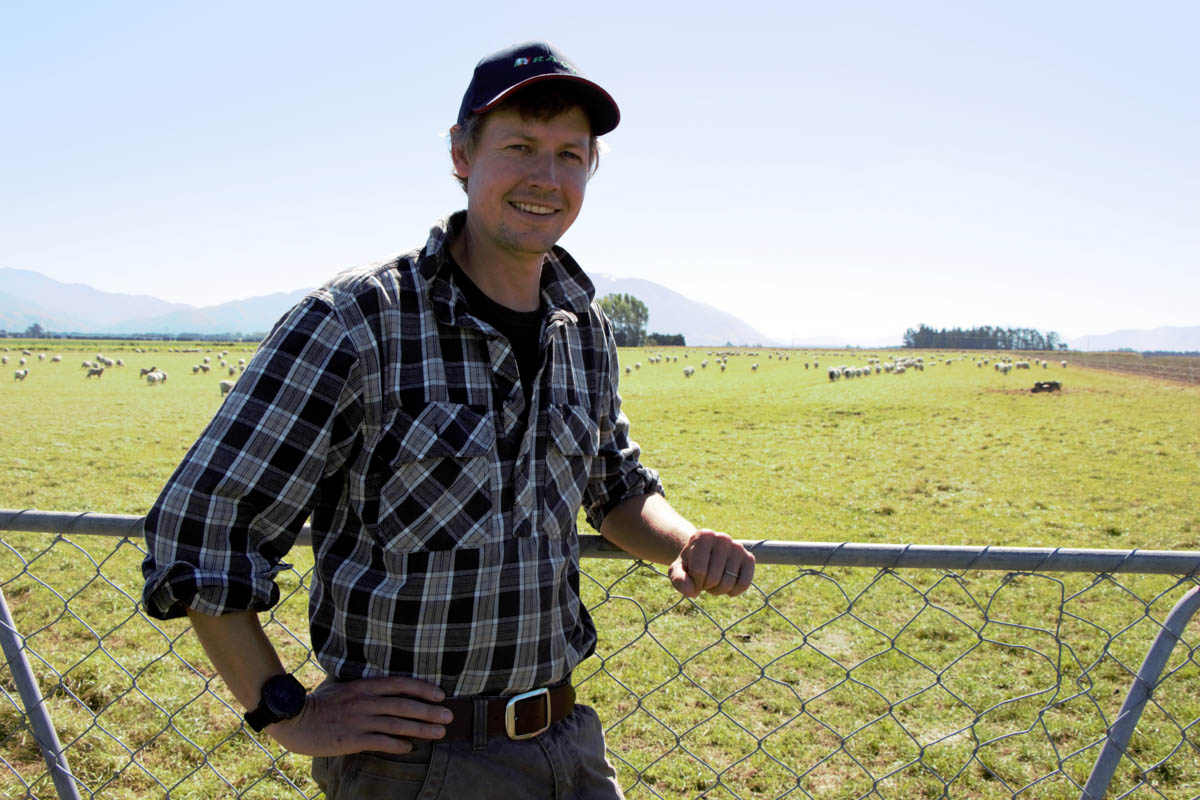BY: JOANNA GRIGG
Pasture and crop wintering systems are running close to the bread line. Farmers are needing affordable supplements to top up stock on much of New Zealand’s east coast.
Through autumn many farmers in North Canterbury, Marlborough, Hawke’s Bay and Northland fed maize, grain, peas, palm kernel, lupins, silage, balage or hay. For many this has continued into winter.
Andrew Johnston, Pasture Development Manager, Luisetti Seeds, said barley is the ideal feed to fill the gap over winter.
“He said it was best value for money for energy feed, consistent in quality, easy to budget per head and can be purchased as you need it.”
Late autumn, the grade feed barley price ex-Canterbury was $380 per tonne, moving up from $360/t over summer. Ewes can have body condition maintained over winter with hay or silage, but an addition of barley offers energy through carbohydrates and ten percent protein.
He said wheat was a similar price but not as safe to feed – it’s a bit trickier.
Recommendations from Beef + Lamb New Zealand is to introduce grain at low rates (25 to 50 grams/day) lifting to full rates of 250g/d over eight days. This helps the rumen adjust. Grain should be a maximum of 30% of total feed, so feed silage, balage or hay alongside.
If sheep over-eat, bacteria in the rumen ferment the grain into strong acids. This can cause metabolic acidosis, toxic shock and death.
Crushed grains can be more prone to causing this. Johnston said farmers should also look towards early spring.
“June is not too late to drill a cereal feed crop like Intimidator oats or Maimai ryecorn.”
 “This is especially useful if paddocks have been used for set-stocking for feeding, and are exhausted.”
“This is especially useful if paddocks have been used for set-stocking for feeding, and are exhausted.”
Getting hoggets on to grain can be helped by feeding sheep nuts alongside, for the first few days. Spread on top of silage or hay to increase uptake and utilisation.
A sprinkle of salt can help attract sheep. Shy feeders can be moved into separate mobs if necessary. Sheep nuts are typically more expensive but can be fed straight onto the paddock with minimum wastage. They also contain a fuller range of minerals and have a high metabolisable energy (ME). High starch (higher energy) sheep nuts should be feed with hay, balage or pasture.
Bruce Clarke, Kiwi Seed, said very dry conditions in Marlborough saw an increase in sales of high protein feed. The usual demand for peas for ewe flushing was higher and farmers also tried feeding white lupins and ‘seconds’ of broad beans, he said.
“This was the first year we have sold white lupins, sourced from Western Australia, and they are dead cheap when you compare feeds on a protein level.”
White lupins have protein of around 30% and were $525/t landed in Marlborough. Peas have 24% protein and cost $520/t landed.
Clarke recommends feeding 70g of lupins per head to ewes as a supplement to dry pasture or balage, with a gradual introduction over the period of a week.
“Spread them thinly in a line so all ewes get a chance and they can’t over-eat.”
“The advantages are they are big and easy for the ewes to scoop up and are not wasted or trampled as much as grain.”
The 25kg bags means farmers without hoppers can feed off a truck, making them suitable for very steep country not suitable to pull a trailer.
Using hay, silage or balage to hold body condition in ewes or to grow on calves is all about the quality of the feed and volume. Pre-purchase testing is highly recommended as well as an agreement for a discount price on any mouldy or poor-quality bales.
Silage is usually very high in fibre and moderate-low in protein. When feeding hay or silage the higher the value (high quality pasture and good fermentation), the higher the productive gains.
Hay from pasture usually has a drymatter (DM) content of 80-85%, with a 500kg bale having up to 420kg DM. Neither of these feeds needs to be introduced as slowly as other supplements, but it’s worth taking some time increasing the amount gradually.




